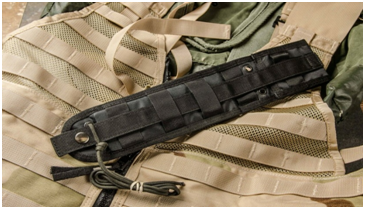A lot of people hear about knife scales but never actually understand what they are. Looking at your knife, notice the blade that is attached to the handle depending on the type of the knife, whether it is a folding knife or a fixed blade. The tang either extends into the handle or not at all. Nearly every knife user would agree that the blade is the most essential feature of the knife.
Hard to argue with that.
However, there is one crucial component that has been overlooked by many not until they get a hold of the knife and find it uncomfortable to use—the handle.
There are often two pieces of material attached on either side of a fixed knife with a full tang, they are called knife scales. Basically, knife scales are two pieces of material found on either side of the tang of the knife which is an integral part of any good knife. Normally, there are pre-cut custom knife scales from the same piece of material, sold ready to use. Oftentimes the method of attachment is with the use of a rivet, epoxy, pins, and or glue. This is the same for folding the knife handle to allow the blade to fold in between the two slabs.
A knife with an ergonomic handle design can make a lot of difference in terms of comfortability and functionality. You may have a robust blade but at the end of the day, you get sore hands from an awful knife handle. Safety and hand fatigue are the two most vital concerns when designing a knife handle to avoid accidents that can cause light to serious injuries.
Affixing Custom Knife Scales
There are several ways to secure custom knife scales to the knife. The tang is where the handle is located and will usually have 3 to 4 holes drilled in the material. To match the holes that are drilled in the tang, the knife scales are then drilled in the same location. To conform the material to the desired shape for ergonomic functionality, the scales are carved or shaped using hand and power tools. Using rivet, epoxy, pins, and or glue the knife scales are affixed to the tang. At this point, knife scales are stained and finished to complete the look.
Knife scales can be customized from a broad variety of materials that depends on your personal preference.
Wood
Wood is the first material to be used for knife scales. It has an appealing aesthetic and an outdoorsy feel, especially when used in bushcraft. Wooden handles give off a certain amount of character to any tool. It adds to the robust personality the knife has.
Hardwood scales are highly advised if the user has an intention to use the knife in various weather conditions since softwood knives tend to easily dent and absorb water since they are typically harvested from coniferous trees. Craft makers go after burlwood since burls have wood grains swirled in many directions that help create a whole other incredible look for the scales.
Stainless Steel
Stainless steel is an extremely sturdy knife scale material that is generally available. Stainless steel knife handles are known for their superior resistance to corrosion, heat, and scratch. However, they tend to slip around in your hand when wet and are commonly heavy. Not really ideal for all-day use since they tend to be on the heavier side.
Micarta
Micarta knife scales are very common but not all people recognize one. It is made of synthetic material composed of linen cloth bonded together with phenolic resin. It is generally used in kitchen cooking knives since it is easy to clean and is also ultimately durable. Compared to stainless steel, Micarta weighs much lighter which is essential in choosing a knife for backpacking purposes or even just an EDC.
Basically, you’ll want a lighter but durable knife scale material for an easy carry knife. For more ideas, head on to The Knife Connection and discover a wide selection of custom knife scales.

